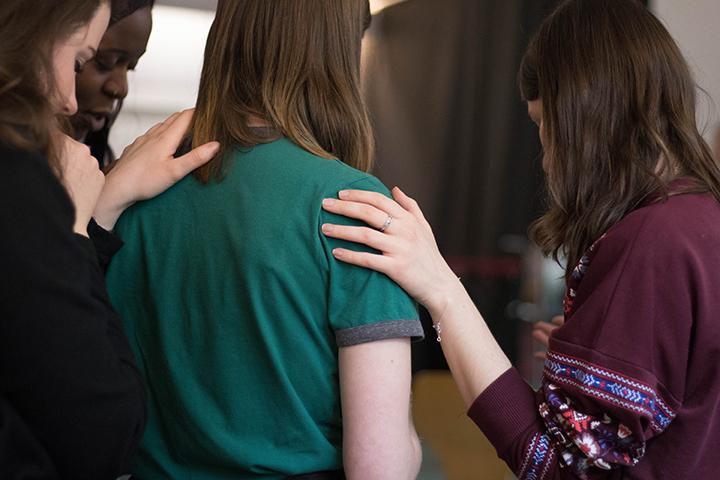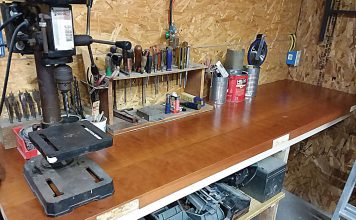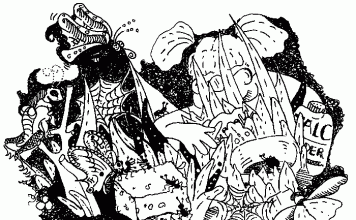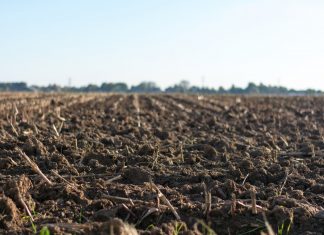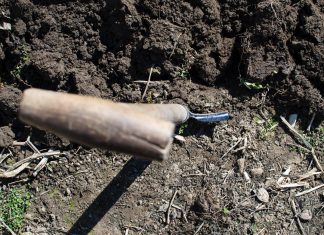| Issue #95 • September/October, 2005 |
Being of Celtic extraction, I am naturally disposed to dwelling on the blacker side of life. I started to wonder what would happen to all the dead bodies in a really big disaster. I assume a small, localized catastrophe would bring outside help mobilized to offer vital services such as autopsies, undertaking, and burials. But what happens if we’re all being quarantined, or if the disaster affects many states? Then I wondered what choices we have in the matter of dealing with dead bodies at home.
Did you know that keeping a deceased person at home is legal in all U.S. states except Connecticut, Delaware, Indiana, Nebraska and New York? That means you can keep your loved one at home until they are buried or otherwise disposed of.
Apparently we are returning to the old ways in these matters. An increasing number of people feel comfortable having their recently deceased tucked up in bed, or laid out in the family room for visitors to view. Personally, I’m all for it. My grandfather was laid out on a board in the parlor when he died, a practice that was quite common back in the day.
My view is that death is just a part of life. It holds its own crucial yet sad place in the season of things. For many people, holding an intimate event such as a viewing in their home, where they feel comfortable and safe, is infinitely more grief-reducing than staging it in a funeral parlor. Having your loved one at home allows you time to say goodbye, quietly and privately. And from a practical standpoint, keeping the body at home cuts a big chunk out of the high cost of a funeral.
The casket
Another way to save money is to have your casket pre-made. Funeral parlors are governed by a code of ethics which obliges them to show you all casket prices but it is not unknown for them to say the $500 casket is out of stock but the fancy $2500 one is right here and ready.
There’s a carpenter in Port Townsend, WA, called Outhouse Charlie who will make you a custom-built coffin you can live with. During your lifetime you can use it as a gun cabinet, a bookcase, a blanket box, or whatever you specify to him. But when you shuffle off your mortal coil, your furniture doesn’t become a problem for the heirs; it turns into your very own coffin. Charlie suggests such quaint touches as fixing some pin-ups on the inside of the lid.
If you don’t want to spend much but like the idea of having a coffin handy, try the selection of cardboard caskets at Genius Goods, Inc. (cardboardcasket.com), in Matthews, NC. Their basic casket costs just $49.95. Their $80 version meets Federal Trade Commission regulations for an “alternative container” and their high- end $275 model, The Sunburst, looks like the real deal but can be put together without tools.
Burial
In most places, it’s okay to bury your loved one on your land, but you must check with the local authorities regarding the rules for groundwater, disposal, etc. and you must realize that not everyone will share your devotion to the deceased. Real estate values can drop by 50% if there’s a grave in the lawn.
Another financial consideration is embalming. Embalming is not required by any state or federal law. The funeral home may require you to embalm if you plan to hold a viewing on their premises, but if you ask around you might find one that does not have this requirement. As with all funeral planning, this is best done in advance when you’re calm and can negotiate freely.
|
For some reason, probably financial, the funeral industry persists in propagating the myth that embalming is more hygienic. In most cases, as long as the corpse is kept cool enough you should be fine. Embalming only becomes necessary if the body will not be interred or cremated promptly, or if it is to be shipped across country by public carrier. Only Alabama, Alaska, and New Jersey have rules about transporting unembalmed bodies across state lines.
In Europe, eco-burials are very popular. Areas of natural beauty are set aside for burials that return the body to the land in as natural a manner as possible. Graves are marked with rocks and indigenous flowers rather than statuary. These haven’t yet caught on much in the U.S., although there is a well-established natural burial center in Westminster, SC, called Memorial Ecosystems.
If disaster strikes
In the case of the disposal of dead bodies in emergency conditions, the World Health Organization Technical Note for Emergencies No. 8 provides useful guidance.
The widespread belief that corpses pose a risk of communicable disease is wrong, especially if death resulted from trauma such as a bombing, fire, earthquake, etc. Bodies are very unlikely to cause outbreaks of disease though they may transmit gastroenteritis or food poisoning to survivors if they contaminate streams, wells, or other water sources.
However, in cases where bodies are diseased, be very careful. The TB bacterium, for example, can exist without a host. When moving a corpse suspected of having TB, workers put a cloth over their nose and mouth and wear a mask to prevent accidental inhalation of infectious bacteria.
Blood-borne pathogens like HIV/AIDS or Hepatitis may also pass to you from a dead body. Infectious HIV can survive in cadavers for a long time (up to 16 days after death if stored at 35º F), so avoid body fluid-to-fluid contact.
Handling the body
If you have to touch a body, wear disposable rubber/plastic gloves or regularly disinfected cloth gloves. Tie your hair back. Wear a mask. You can use large plastic bagsthe biggest lawn/trash bags you can findor heavy plastic sheeting to enclose the body. If you must cleanse the body, wipe it with a mild bleach solution and be very careful of feces as they do carry infectious agents. You may consider packing orifices with cotton wool or wadding before moving a body. Dispose of your gloves carefully.
|
Bioterror
Only in a bioterror attack will you encounter these diseases.
Cholera: Contact with an infected body leads to exposure to cholera vibrios and requires careful washing using soap and water.
Ebola: Ebola is spread through bodily secretions such as blood, saliva, semen, vomit, urine, and stools, and the body can remain infectious for several weeks. It can be killed with 2% diluted bleach. Those dealing with the disposal of bodies require very high levels of protection.
Typhus and plague: To avoid infestation with the fleas and lice that spread these diseases, wear protective clothing. Use body bags to store the remains prior to burial or cremation. Remember that pets can be hosts to disease-carrying fleas, lice, and ticks.
Mental health risks
The psychological trauma of losing loved ones and witnessing death on a large scale is a great cause for concern in most disasters. People want to do something to be useful. However, it is not necessary to rush burial or cremation. What is important is that you make correct identifications and keep good records of the dead. When the world catches up with you, the authorities will appreciate any information you can give them.
Multiple bodies
If you are dealing with more than one death, it is important you do not have a mass grave. Whether you bury the dead or create a makeshift morgue, keep each person separate and be sure to include their details, such as name, age, cause, time, location, and date of death, if known. Write this out and put it in a baggie or a sealed tin and bury with the deceased. Also keep copies for yourself and the authorities.
WHO recommendations for a mass burial advise that grave sites be at least 160 feet from groundwater drinking sources, 500 yards from the nearest home, at a depth of 6 feet above the groundwater table, with at least a 3-foot covering of soil. If coffins are not available, bodies should be wrapped in plastic sheeting to keep the remains separate from the soil. If necessary, your emergency grave can be constructed above ground from a mound of earth or stones.
Cremation
There are no health advantages of cremation over burial. Factors against it are the amount of fuel required by a single cremation (approximately 650 lbs. of wood) and the smoke pollution caused. Cremation sites should be located at least 500 yards downwind of dwellings.


